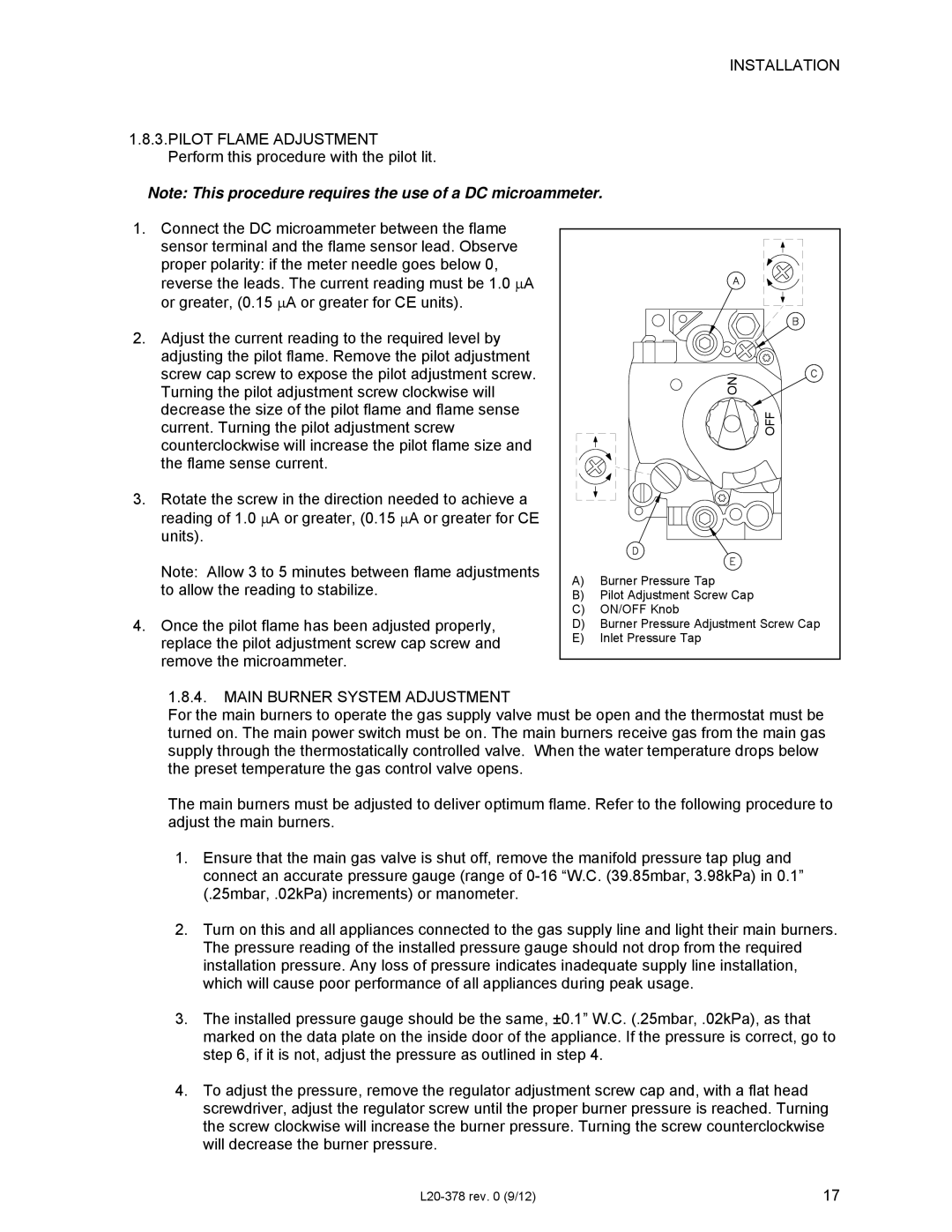L20-378 specifications
The Pitco Frialator L20-378 is a highly regarded piece of commercial kitchen equipment, specifically designed for high-volume frying operations. Renowned for its efficiency and durability, the L20-378 meets the demands of busy restaurants, fast food chains, and catering operations that require consistent performance and outstanding results.One of the standout features of the L20-378 is its impressive fry tank capacity. With a 40-pound oil capacity, it can handle a significant amount of product at once, allowing for simultaneous frying and the ability to serve large volumes quickly. This efficiency not only enhances productivity but also helps streamline kitchen operations during peak hours.
The L20-378 utilizes advanced heating technology known as "Heat exchanger" design. This technology maximizes heat transfer from the burners to the oil, ensuring that food cooks evenly and consistently. As a result, operators benefit from faster cooking times and exceptional product quality, with crispy exteriors and tender interiors.
Moreover, the unit's durable construction is a key characteristic. Built with stainless steel, the L20-378 is not only resistant to corrosion but also easy to clean and maintain. This durability extends the life of the fryer, making it a valuable investment for any kitchen. The fryer also features a convenient drain valve, enabling easy oil changing and maintenance, which is crucial for keeping the frying environment clean.
The L20-378 is equipped with user-friendly controls that allow for precise temperature settings and consistent frying results. This ease of use ensures that even less experienced staff can operate the fryer efficiently, minimizing the risk of mistakes during crucial cooking processes.
Another important aspect of the Pitco Frialator L20-378 is its safety features. These include built-in automatic temperature controls and high-limit protection to prevent overheating, contributing to a safer working environment. Additionally, the fryer is designed with a cool zone that helps catch food particles, reducing the likelihood of oil breakdown and extending the oil life.
In summary, the Pitco Frialator L20-378 is an exceptional fryer that combines large capacity, advanced heating technology, durable construction, and user-friendly controls. Its focus on efficiency and safety makes it a preferred choice for busy kitchens that demand reliable frying solutions capable of producing high-quality food consistently.

